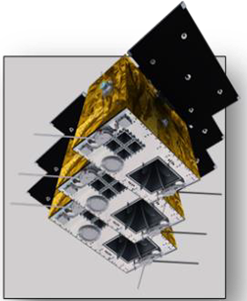Radio Frequency Sensing
How can radio frequency detection enhance Earth Observation capabilities?
The radio frequency spectrum forms the basis of today's modern wireless communications. Vital technologies and services including mobile calling, broadcasting, GPS, Wi-Fi, ship navigation, and airport traffic control all operate in the radio frequency bandwidth between 30 kHz and 300 GHz.
Monitoring these radio frequencies from space can unlock novel insights about activity across the Earth's surface. While traditional Earth Observation methods, such as optical imaging, face limitations due to lighting and atmospheric conditions, radio frequency antennas can continuously track the presence of radio frequencies regardless of rain or cloud coverage.

Radio Frequency Sensing Payload
Aerospacelab is excited to add radio frequency sensing to its Earth Observation capabilities. Its radio frequency sensing (RFS) payload features several types of antennas that can identify and characterize radio frequency emissions. A trio of satellites equipped with RFS payloads were launched in March 2024. Individually, each satellite collects and locates RF signal data, and by flying in a triangular formation, the set provides enhanced geolocation of emission sources. The triad will augment a fleet of Very-High Resolution and Multispectral satellites and will demonstrate the versatility of satellite platforms developed by Aerospacelab to carry the most demanding optical or radio frequency payloads.
Ready to take your knowledge to the next level?
Register to receive the full RF Sensing White Paper!